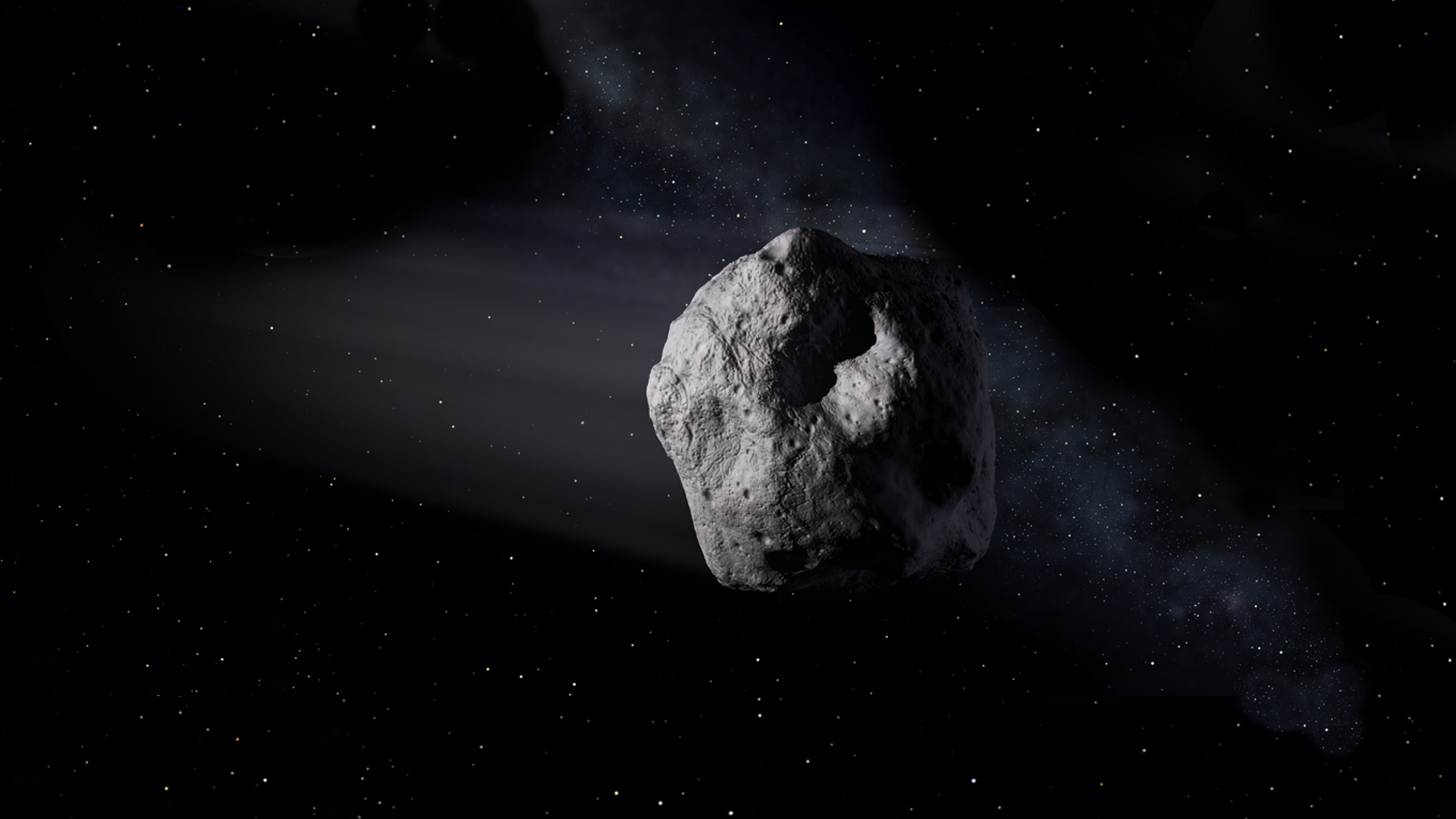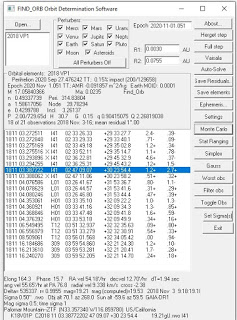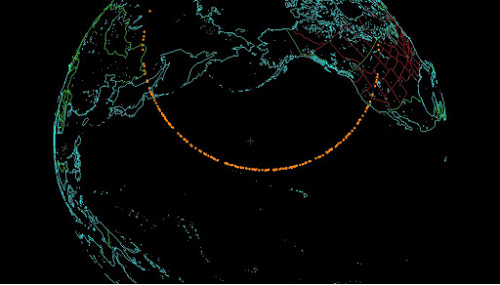A Foofaraw Over a NEO Designated 2018 VP1

Artist's concept of a near-Earth object. Image: ----- Courtesy NASA/JPL-Caltech

Artist's concept of a near-Earth object. Image: ----- Courtesy NASA/JPL-Caltech
| Object | Date of discovery | Date of Impact | Size(M) |
| 2008 TC3 | 2008-10-06 | 2008-10-07 | 4.1 |
| 2014 AA | 2014-01-01 | 2014-01-02 | 2–4 |
| 2018 LA | 2018-06-02 | 2018-06-02 | 2.6–3.8 |
| 2019 MO | 2019-06-22 | 2019-06-22 | 3–10 |
One of the programs available to the amateur observers of asteroids and comets is Find_Orb.[By Bill Gray] It is useful for calculating approximate ephemeris, determining approximate orbits, generating virtual asteroids, virtual impactors, predicting impact locations, and many other things. It should be noted IF one uses the wrong setting, one gets an incorrect solution. Find_Orb can generate an "asteroid risk corridor" with the help of Guide 9.1.[By Bill Gray]

| Selecting perturbers | All |
| Epoch | 2020-11-01.051 |
| Monte Carlo noise | 2 |
| Physical model Include | SRP |
| Filler out | 3 worst observations |
As a test of concept, I obtained the observations of 2018 VP1 for the Minor Planet Center. I loaded the observations into Find_Orb and had it run the Monte Carlo method all night. Find_orb generated the following files MPCOrb.dat, state.txt, and virtual.txt. These files had orbits for 129,659 virtual asteroids 200 were virtual impactors( about 0.15%). I place a copy of the virtual.txt file in the Guide directory along with a copy of impact.tdf.(Project Pluto) Then Guide could generate a map of an asteroid risk corridor.

An asteroid (fireball) risk corridor of potential impact for the NEO 2018 VP1, the orange dots is where 200 virtual impactors strike the Earth's atmosphere.
@kpheider asked me to calculate a path of risk for #2018VP1. It's only a few meters across but JPL's SENTRY has it at 1 chance in 240 of impacting on Nov 2, 2020 (ESA/NEODys has it at 1 in 400). Path of risk stretches across the Pacific. Calculated with SOLEX 12.1 pic.twitter.com/U8SGb8CvOl
— Peter Thomas (@ptastro1) July 26, 2019